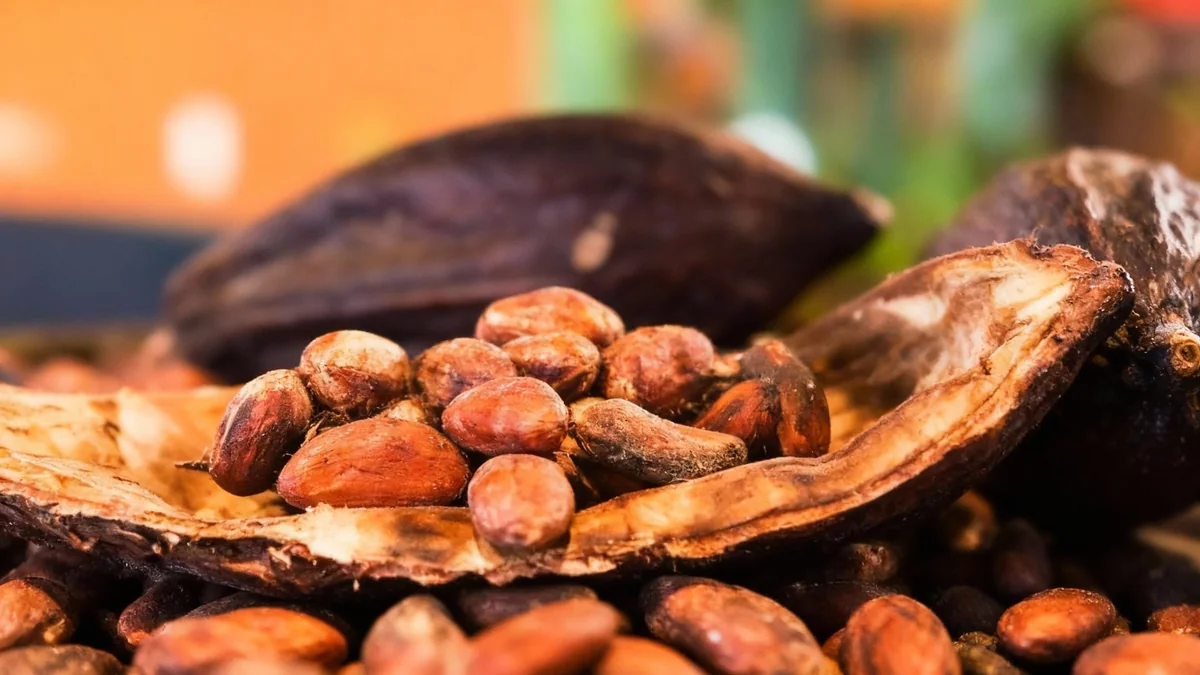Cocoa prices surged by over 6% on Monday, driven by news that the commodity will be added to a major financial index for the first time in two decades. This development is expected to trigger a wave of buying from investment funds, adding significant pressure to a market already grappling with tight supplies from West Africa.
The move comes as the chocolate industry faces a complex landscape of shrinking consumer demand due to high prices, while farmers in key growing regions report mixed signals for the upcoming harvest.
Key Takeaways
- Cocoa futures jumped over 6% after its inclusion in the Bloomberg Commodity Index (BCOM) was announced.
- An estimated $1.9 billion in new investments is expected to flow into cocoa futures over the next 80 days.
- Supply concerns persist, with cocoa shipments from the Ivory Coast down 16% compared to last year.
- High prices are impacting consumers, as North American chocolate sales volumes have fallen by more than 21%.
The Bloomberg Index Effect
The primary catalyst for the recent price spike was the announcement that cocoa will be included in the Bloomberg Commodity Index (BCOM) starting in January. This marks the commodity's return to the influential index after a 20-year absence.
The BCOM is tracked by investment funds managing nearly $109 billion in assets. With cocoa set to have a 1.7% weighting in the index, passive funds that mirror its composition will be required to purchase cocoa futures to rebalance their portfolios.
A Surge of New Investment
According to analysis from Peak Trading Research LLC, investment funds will need to purchase approximately $1.9 billion worth of cocoa futures over the next 80 days to align with the new index weighting. This mandatory buying is expected to create significant upward pressure on prices.
This structural shift introduces a new, powerful source of demand into the market that is unrelated to the physical consumption of cocoa for making chocolate.
Supply Chain Struggles Continue
The market's reaction to the index news is amplified by ongoing supply issues in West Africa, the world's primary cocoa-growing region. Recent government data from the Ivory Coast, the largest producer, shows a significant slowdown in exports.
Farmers in the Ivory Coast shipped 304,840 metric tons (MT) of cocoa to ports between October 1 and November 2. This figure represents a 16% decrease from the 365,072 MT shipped during the same period last year, signaling a slow start to the new marketing season.
A Record Deficit
These new figures follow a historically tight season. The International Cocoa Organization (ICCO) reported that the 2023/24 season ended with a global cocoa deficit of 494,000 MT, the largest in over 60 years. The agency also noted that the global cocoa stocks-to-grindings ratio fell to a 46-year low of 27.0%.
Adding to the concerns, Nigeria, the world's fifth-largest producer, projects its 2025/26 cocoa production will fall by 11% year-over-year to 305,000 MT. These persistent supply constraints have kept inventories low, with ICE-monitored stocks in U.S. ports recently hitting a seven-month low.
Consumers Push Back on High Prices
While supply remains tight, there are clear signs that record-high cocoa prices are beginning to destroy demand. Consumers are buying less chocolate, and processors are grinding fewer beans.
In North America, sales volume of chocolate candy dropped by more than 21% in the 13 weeks ending September 7 compared to the previous year, according to data from research firm Circana. The trend was evident during a key sales period, with the CEO of chocolate-maker Hershey describing this year's Halloween sales as "disappointing."
Global Grindings Decline
The slowdown is a global phenomenon. Cocoa grindings, a key measure of demand, have fallen sharply in major markets:
- Asia: Q3 grindings fell by 17% year-over-year, reaching a nine-year low for the quarter.
- Europe: Q3 grindings declined by 4.8%, hitting a ten-year low for the third quarter.
While North American grindings reportedly rose by 3.2%, the National Confectioners Association noted that the addition of new reporting companies skewed this data, potentially masking a weaker underlying trend.
A Mixed Outlook for the Future
Despite the current supply crunch, some industry players see potential for improvement. Chocolate maker Mondelez recently stated that the latest cocoa pod count in West Africa is 7% above the five-year average and significantly higher than last year's crop. Farmers in the Ivory Coast are reportedly optimistic about the quality of the main crop harvest, which has just begun.
Looking further ahead, the ICCO has projected a potential shift in the market balance. For the 2024/25 season, the organization forecasts a global cocoa surplus of 142,000 MT, which would be the first surplus in four years. This forecast is based on an expected 7.8% rebound in global production.
For now, however, the market remains focused on the immediate supply tightness and the imminent wave of investment buying, a combination that has sent prices soaring and left the future of the chocolate market uncertain.





